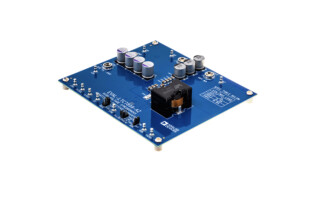Edge AI Design Demands Comprehensive Development Tools
April 18, 2022
Story

The combination of connectivity and sensing with low-power artificial intelligence (AI) processing platforms has dramatically changed our relationship with machines, and forever altered how we live, work, and play. Though their energy requirements are minimal by design, these powerful processors are enabling AI capabilities on edge devices that allow them to process data locally for a range of smart applications for the home, office, and industrial environments.
Until recently, such applications relied on cloud-based processing and powerline access, but that’s changing. Thanks to a new wave of low-power AI-enriched solutions targeted at the edge of a network, products designed for both embedded industrial and consumer applications can make decisions locally, without relying on a cloud connection. This ensures privacy, reduces response time, conserves energy, and makes better use of available wireless bandwidth. It also allows these devices to run off AAA or even coin-cell batteries for extended periods, liberating them from the constraints of line power.
The wave of innovative edge AI has put designers in the position of needing to rapidly develop products amid a changing technology landscape. Their designs rely on both the sophistication of AI and its ability to be deployed at the network edge, where it can make intelligent decisions based on data from multiple sensor inputs using accurate and specifically-trained AI models.
Success depends upon the design team’s ability to deploy their products quickly in an ultra-competitive market - and the motivation to do so is strong, as the edge AI market presents enormous financial rewards.
Despite the opportunity, the dream of developing AI-infused products can quickly become a nightmare. Considering there’s a seemingly endless list of hardware and software to select from before even commencing a design, on the dream-nightmare spectrum a designers fall depends largely upon the tools they have to work with.
Well-thought-out evaluation and design development platforms have dream-making potential; they remove many, if not most, of the time-consuming, headache-inducing steps in product development. Any designer who has ever had to gather a disparate array of hardware, select software from myriad options, then cobble them together into what is essentially a roll-your-own development platform—all before even beginning a design—can testify to that.
This is especially true for system-on-chip (SoC)-based designs. As their name implies, SoCs combine a range of essential yet previously separate functions into a single, efficient chip. In the case of our Katana Edge AI SoC, for example, those functions include advanced processing, connectivity, audio and video input and output, power sources and, of course, intelligence, based on our proprietary neural network technology (Figure 1).
We at Synaptics understand all too well the need for comprehensive development tools. Our customers appreciate and have greatly benefited from well-rounded development platforms at their disposal. The Katana platform has achieved widespread success in adoption thanks as much to its comprehensive development tools that make the design process as straightforward as possible as the underlying performance, power, and system integration capabilities the SoC offers.
Edge AI products built around SoCs represent some of the most sophisticated designs in use. Because of the diverse applications those devices target, their development platforms have to be as complete as possible. The evaluation kit (EVK) we recently introduced for Katana, as an example, contains not just the base board with the SoC, a multitude of sensors and a Wi-Fi/Bluetooth wireless connectivity module, but also individual accessory boards simulating a range of duties: camera, peripheral extensions, and power source. Cables, batteries, and enclosures round out the EVK (see Figure 1).

Figure 1: Evaluation kits for SoC-based edge AI designs demand an array of hardware and software, such as a camera module, multiple sensors, wireless connectivity, and AI algorithms.
The AI algorithms in EVKs like this can enable sophisticated features in SoCs, such as counting people for applications in smart buildings, theaters, and stadium crowd control (see Figure 2). Other, perhaps more mundane tasks include remotely reading meter panels and legacy industrial equipment. By using a smart camera to read the LCD or LED displays used in legacy industrial equipment, that equipment can be quickly and unobtrusively brought into the Industrial Internet of things, or IIoT. This solves a huge problem in the world of factory automation and Industry 4.0.

Figure 2: SoCs and the algorithms in their supporting EVKs can be utilized for people-counting in smart buildings and theaters, and for crowd control at stadium. See related video here.
SoCs at the heart of the edge AI revolution, along with the development tools supporting them, are looking at a bright future. Anand Joshi, managing director of AI analysis firm JD Data and author of the report Ultra-low Power AI Chips for Always-on Applications, observes that SoCs’ wide variation in power, size, performance, and degree of functional integration in embedded and IoT systems pose particular challenges to designers. The costly time delays inherent in fragmentation – disparate hardware and software pieced together into a makeshift development platform – can be mitigated, he says, with proven EVKs such as the Katana Edge AI kit, which he cites as critical to getting projects off the ground.
Power-efficient AI at the network edge has arrived, which makes edge AI SoCs—and the comprehensive development tools supporting them—a must-have, rather than the exception.





